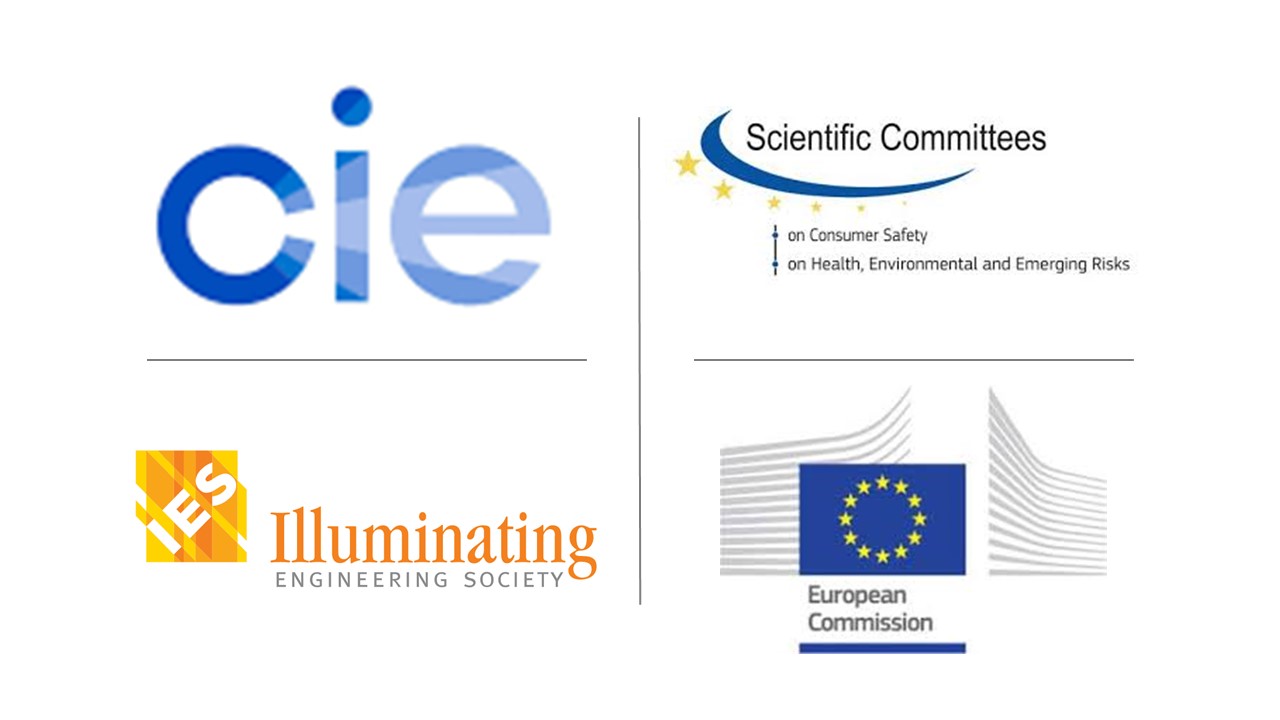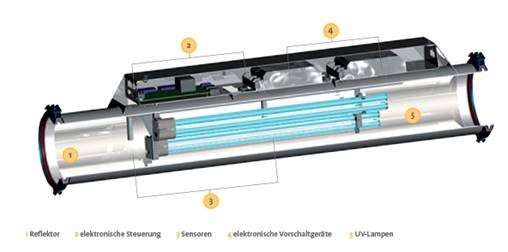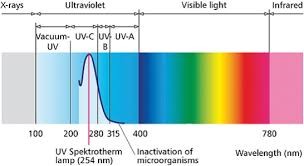Use of UVC germicidal lamps against Covid-19
On 15th April, the Photobiology committee of the IES (Illuminating Engineering Society, based in US) released a report questioning Germicidal Ultra-Violet (GUV) lamps and their applications. The purpose is here to address the questions these germicidal solutions are raising, in the context of the Covid-19 pandemic.
UVC lamps
GUV lamps using UVC are mainly low-pressure mercury lamps, emitting 80% of 253,7 nm wavelength radiations. Some UVC LEDs are also present on the market as part of recent applications but are still undergoing testing – moreover, as wavelength along with irradiation power are crucial for achieving an efficient virus disinfection (see blue box), available technologies based on LEDs are still expensive compared to low-pressure mercury lamps.
Current uses
Since the 1950’s, GUV lamps have been efficiently used for air disinfection in hospitals and healthcare departments – especially in order to limit spread of airborne bacteria responsible for tuberculosis. They are set up in upper-rooms or HVAC, to avoid human irradiations, and their emissions inactivate airborne bacteria and viruses thanks to air circulation and convection.
Surface disinfection using UVC irradiations is less common as their efficiency is reduced due to their low transmission rate: to reach viruses hidden on surfaces, higher fluence rates are required. Because of this reason and because surfaces to be disinfected are in humans’ direct environment, those applications are also more likely to be harmful for users.
Photobiological risks
UVC from solar rays are interacting with the ozone layer and do not reach the ground level: Human UVC exposure therefore only happens artificially and accidentally. As mentioned before, the transmission rate of UVC radiations is relatively poor compared to UVA’s and UVB’s (i.e. penetration through human cornea is about 1% at 260 nm and 30% at 300 nm). However the SCHEER report, published beginning of 2017 by the European Commission, stated that even if UVC radiations were mainly stopped by the skin first layers, they would be involved in specific medical problems such as erythema, cornea damage and skin cancers: daily exposure should therefore be limited to a certain dose.
Considered uses
Considering the current global need for disinfection the pandemic crisis is generating, use of these GUV technologies could be largely implemented in all parts of our everyday lives: supermarkets, offices, public transports, etc.

Inactivation of viruses with UVC process
The SARS-CoV-2, the virus responsible for the Covid-19 disease, is an infectious factor composed of a RNA chain: its irradiation with specific electromagnetic frequencies disrupts hydrogen bonds in its aminoacidic chain, and then inactivates it;
Those optimal electromagnetic frequencies for inactivation are part of the UV spectrum and more particularly of the UVC range (200 to 280 nm), with a germicidal efficacy peak at 260-270 nm. Above this peak, the germicidal efficacy of UVB and A decreases logarithmically;
Each microorganism has its own intrinsic sensitivity to UV radiations, which defines its decay rate;
Finally, the germicidal efficacy of a UV radiation depends on:
- its wavelength;
- the structure of the targeted microorganism and its ability to recover from damages induced by the UV irradiations;
- the duration and power of the irradiation (fluence rate, measured in J/m²);
- the degree of ambient relative humidity.


What ENGIE Laborelec can do for you under ISO 17025 accreditation
- Compliance testing regarding safety standard, according to IEC 62471 (photobiological safety of lamps and luminaires);
- Measuring the spectrum and intensity of UV-sources;
- Calibration of UV measurement devices.